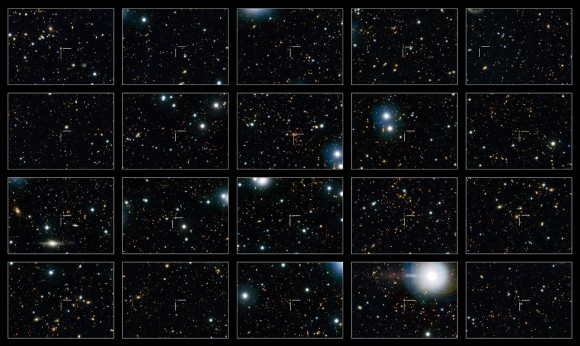

| Visitors Now: | |
| Total Visits: | |
| Total Stories: |

| Story Views | |
| Now: | |
| Last Hour: | |
| Last 24 Hours: | |
| Total: | |
The Great Galactic Turn-Off

This image shows 20 of the quenched galaxies — galaxies that are no longer forming stars — seen in the Hubble COSMOS observations. Each galaxy is identified by a crosshair at the centre of each frame. Quenched galaxies in the distant Universe are much smaller than those seen nearby. It was thought that these small galaxies merged with other smaller, gas-free galaxies to grow bigger, but it turns out that larger galaxies were “switching off” at later times and adding their numbers to those of their smaller and older siblings, giving the mistaken impression of individual galaxy growth over time. Credit: NASA, ESA, M. Carollo (ETH Zurich)
Are you ready for a new galactic puzzle? Then let’s start with some clues. It has been long assumed that some galaxies reach a point in their evolution when star formation stops. In the distant past, these saturated galaxies appeared smaller than those formed more recently. This is what baffles astronomers. Why do some galaxies continue to grow if they are no longer forming stars? Thanks to some very astute Hubble Space Telescope observations, a team of astronomers has found what appears to be a rather simple explanation. Which came first? The chicken or the egg?
(…)
Read the rest of The Great Galactic Turn-Off (596 words)
© tammy for Universe Today, 2013. |
Permalink |
No comment |
Post tags: Early Universe, galactic evolution, star formation
Feed enhanced by Better Feed from Ozh
Source: http://www.universetoday.com/103880/the-great-galactic-turn-off/


